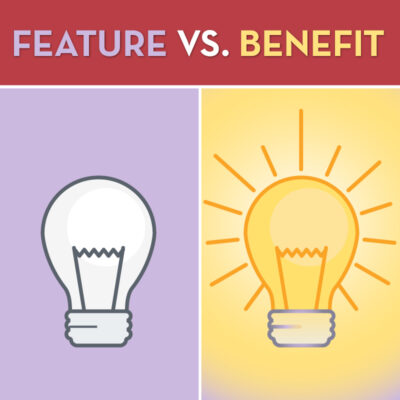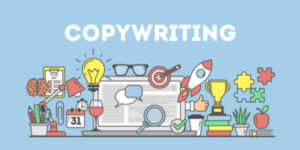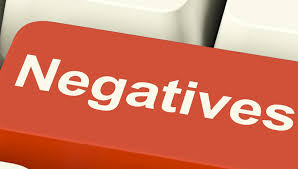If you sell anything you need to understand the difference between features and benefits.
Understanding this fundamental difference and using this insight in your marketing will help you to:
- Connect with more customers
- Promote your products or services more effectively
- Make more sales
- Make more money
It doesn’t matter if you’re a salesperson who sells products or services in person, an online marketer, or an offline marketer – you need to understand the difference between features and benefits in order for your sales and marketing to be more effective.
Features vs Benefits – what’s the difference?
Many people in sales or marketing confuse features and benefits as being the same thing. They are very different, and both play a different role in your sales copy.
What’s a feature?
Features are the attributes or qualities of your product or service.
What’s a benefit?
Benefits are what those attributes mean to your customer. The benefits can be a result that they’ll get from using your product, or it could be a feeling they’ll get from it, or both.
Benefits are the primary reason why your customer will buy your product.
Example:
Let’s look at a BMW and see the difference between its features and benefits.
- Feature: 450 BHP, 8 litres, V-12 engine Benefit: power, more control, improved handling and stability
- Feature: heated leather seats Benefit: comfortable luxury seating all year round in all climates
- Feature: rear passenger airbags and child locks Benefit: safety and security for your family giving you peace of mind whenever they are in the car
Do you see the difference? Features are attributes, components, or qualities of your product. Benefits are what those attributes, components and qualities mean to your prospect.
If you remember this fundamental difference and communicate this in your ads and sales copy you’ll start to make more sales – because when you highlight the benefits you are telling them why they should buy.
“What’s in it for me?” (WIIFM)
This is what your customer really cares about when they are reading or viewing your advert. Sorry, but the truth is they aren’t overly interested in you or your company!
“What’s in it for me?” (also abbreviated to WIIFM) is all they are concerned about. What can your product or company do for them? This is what they really want to know. Whenever your customer reads your sales page or watches your ad they are thinking about themselves.
They couldn’t care less if you’re celebrating your 10th year in business. They don’t care about how many units you sold last year. What they do care about is – what’s in it for them!
I’ve seen so many marketers and salespeople make the classic mistake of talking about features without mentioning the benefits. These sorts of marketers and salespeople are always wondering why their prospects don’t buy.
“I mentioned every spec and feature of the product and they still weren’t impressed enough to buy!” they moan to themselves. That’s because people don’t buy on logic, they buy on emotion! Features trigger the logical part of your prospect’s brain. Benefits trigger the emotional part of your prospect’s brain
When you explain how they will benefit from your product you’re appealing to the emotional aspect of their personality. Your sales copy and ads should be filled with the benefits and results your customers will get from using your product or service. Fill your sales copy and ads with benefits, rather than over-emphasising features.
Aren’t features important?
Of course, you need to mention the features and specs of your product or service, but you should always relate them back to the benefits.
There are some industries, such as the automotive industry and electronics industries, that tend to focus more heavily on feature-driven messaging than benefits. Many car adverts or ads for laptops or cameras tend to focus more on features. But ultimately what drives prospects to actually part with their hard earned cash for these items are the benefits.
When you watch a car advert you’ll hear the voice over talk about the features, but the visuals are always telling the story of the benefits.
If features alone sold cars, they’d be no need for those over-the-top adverts. You know the ones I’m talking about – the ones that feature beautiful looking couples driving through serene looking mountain roads…..The elaborate visuals and sounds of the ad aren’t communicating the features, they are communicating the feeling (benefit) that you’ll get when you drive this car.
The feeling of driving through picture-perfect mountain scenery, with the top down, hair blowing in the wind, and lover in the passenger seat. The roar of the engine, the sound of the tyres driving across gravelled roads…..that’s what sells you!
When you visit a car showroom it’s all good being told by a salesperson that the new BMW has heated leather seats. But that doesn’t get you salivating, does it? What really sells you is the feeling of luxury and comfort you feel when you sit in the seat – ultimately it’s the benefit and emotion that convinces you to buy.
For most products or services you can’t go wrong when you emphasise the benefits in your copy over the features. You can do that by keeping your customer front of mind, and asking yourself questions that make you focus on how your products’ features relate to them.
Things to keep in mind when writing sales copy
These are some customer focused questions you should ask when you are writing your sales copy or putting your ad campaigns together.
- Why should your customer care about this feature?
- Why does this do for them?
- How do these features benefit your customer?
- What result will this give your customer?
- What problem does this solve for them?
- How does this make them feel?
Instead of concentrating solely on how great your product is, concentrate on what it can do for your customers. If you can answer these questions in your sales copy and ads you’ll be able to achieve that.
How to link features and benefits
There are some simple words or phrases you can use to link features and benefits. They are:
“Which means…..”
“So that…..”
“So you……”
Let’s see how easy it is to link features and benefits using any of these connecting phrases. I’ll use the BMW example I used earlier.
Example:
- Feature: 450 BHP, 8 litre V-12 engine Benefit: more power, greater control, improved handling and stability
Linked feature and benefit: 450 BHP, 8 litre V-12 engine WHICH MEANS you’ll have more power, greater control, and improved handling and stability on the road.
- Feature: heated real-leather seats Benefit: comfortable seating all year round in all climates
Linked feature and benefit: heated real-leather seats SO THAT you’ll feel luxuriously comfortable whatever the climate
- Feature: rear passenger airbags and child locks Benefit: comfortable seating all year round in all climates
Linked feature and benefit: rear passenger airbags and child locks SO YOU can drive your family around safely with total peace of mind
Pretty straightforward, right? When you link the features to benefits you are telling your prospects why they should buy. You are telling them clearly what exact benefits or results they can expect to gain when they make the purchase.
This makes it easier for them to justify buying your product.
Sell the hole, not the drill
When you start focusing on the benefits or results your customers can expect to get when they buy your product, you will start to sell more.
As the legendary Harvard marketing professor, Theodore Levitt once said:
“People don’t buy ¼-inch drills because they want a ¼-inch drill, they buy ¼-inch drills because they want ¼-inch holes”
In other words, people aren’t buying your product because they want your product – they buy because they want the result or benefit your product gives them.
Knowing how to use features and benefits the right way effectively means selling the hole, not the drill. Keep this in mind and make your adverts and marketing campaigns customer focused.
Tell your prospects how they’ll benefit and what results they’ll get when they buy and use your product. Tell them how these benefits will make them feel. The more emotion you can tie to the benefits the better.
Features tell, benefits sell!
Now that you understand the difference between features and benefits, go through your marketing materials and see if you need to change the focus of your ad copy.
Just adding even one simple statement linking a key feature and benefit can make all the difference. If you get confused between the difference between features and benefits just remember this quick reminder: features tell, benefits sell!
Features tell your customers about your product, benefits sell your customer on why they should buy your product. Keep your prospects’ needs and problems at the forefront of your mind when writing your copy by referring to the customer focused questions above.
When you focus less on yourself and more on what your product can do for your customers they’ll love you all the more for it, and this should be reflected in your ability to reach more people and increase your sales.




